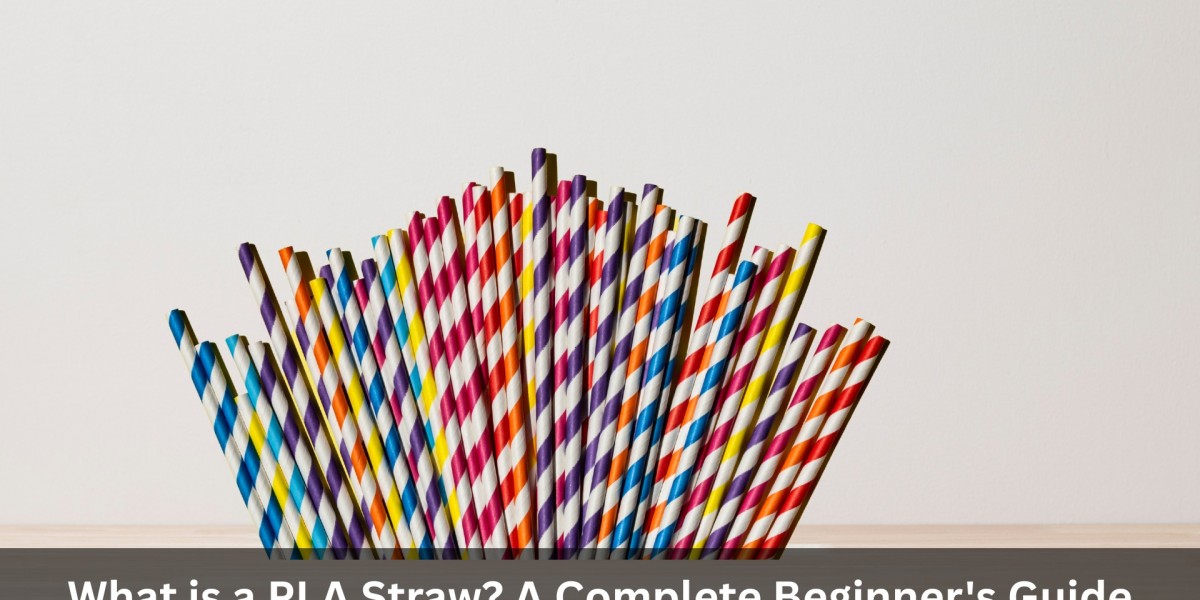Sustainability isn’t a passing idea anymore; it has become an essential part of how we live. As more people search for eco-friendly options to replace single-use plastics, one material has caught attention, and that is PLA. You might have seen PLA straws as a substitute for traditional plastic straws, but do you know what exactly PLA is and why it is considered a greener choice? How are they produced, and how do they protect the environment?
This beginner's guide will explain everything you need to know about PLA straws, from their composition and benefits to their limitations and common misconceptions. By the end, you'll understand whether PLA straws are the right choice for your business or personal lifestyle.
What is PLA?
PLA, or Polylactic Acid, is a bioplastic made from renewable plant materials such as corn starch, cassava, and sugarcane. Unlike petroleum-based plastics, PLA is considered bio-based and biodegradable under certain conditions.
Because of its plant origins, PLA has been widely adopted in packaging, food service items, disposable tableware, and straws. The idea is simple: replace petroleum plastic with a material that reduces environmental impact while being practical for everyday use.
What is a PLA Straw?
A PLA straw is a type of drinking straw made from polylactic acid (PLA) instead of petroleum-based plastics like polypropylene or polystyrene. Lightweight, durable, and available in clear or colored options, PLA straws work well for serving cold drinks.
However, the key difference is that PLA straws come from renewable resources and can be industrially composted. When composted properly, they decompose into carbon dioxide, water, and natural organic matter, instead of staying in landfills or oceans for hundreds of years.
How Are PLA Straws Made?
The process of making PLA straws typically involves these steps:
- Extraction of sugars from renewable crops such as corn or sugarcane.
- Fermentation of sugars into lactic acid by bacteria.
- Polymerisation of lactic acid into polylactic acid resin (PLA).
- Extrusion of PLA resin into pellets, which are then melted and shaped into straws.
This process ensures that PLA straws retain the strength and smoothness of plastic while relying less on fossil fuels.
Benefits of PLA Straws
Eco-Friendly Alternative
Reducing dependence on petroleum-based plastics, PLA straws are made from renewable resources.
Compostable
Unlike plastic straws, which can take hundreds of years to break down, PLA straws can biodegrade in industrial composting conditions within a few months.
Safe for Food Use
PLA is approved by the FDA for food contact, making it safe to use with drinks.
Look and Feel Like Plastic
PLA straws remain sturdy in cold beverages, unlike paper straws, which can become soggy quickly.
Brand Image Boost
Businesses that choose PLA straws highlight their commitment to eco-responsibility, which strongly appeals to customers who care about the environment.
Limitations of PLA Straws
- PLA straws are a step forward toward reducing plastic waste, but they're not a perfect solution.
- PLA straws need industrial composting facilities to break down completely. If they end up in landfills or oceans, they may behave like regular plastics.
- Heat Sensitivity: PLA has a lower melting point than petroleum plastics, making PLA straws unsuitable for hot drinks.
- Limited Recycling Options: PLA is not recyclable in standard plastic recycling streams, which can confuse waste management systems.
Are PLA Straws Really Eco-Friendly?
This is one of the most common questions. The answer: yes, but with conditions.
PLA straws are eco-friendly compared to petroleum plastics when they are:
- Sourced from sustainable agriculture.
- Sent to composting facilities for proper disposal.
However, in regions without composting infrastructure, PLA straws may end up in landfills, where their environmental benefits are reduced.
That said, PLA straws still represent progress, they reduce reliance on fossil fuels and promote innovation in sustainable packaging.
How to Use PLA Straws Responsibly
- Check Local Composting Facilities: If available, send PLA waste to industrial composting centres.
- Educate Customers: If you're a café or restaurant, include disposal instructions on menus or signs.
- Pair with Other Eco Options: Combine PLA straws with compostable cups, lids, and cutlery for a fully sustainable offering.
- Consider Alternatives When Necessary: For hot drinks, paper straws or reusable options may be a better choice.
Conclusion
PLA straws are not a perfect solution. They're a significant step toward reducing single-use plastic pollution. They strike a good balance between convenience and sustainability for cold drinks and eco-conscious businesses.
PLA straws are a great starting point if your business wants to adopt greener practices, especially when combined with other compostable packaging. Choosing and using PLA straws responsibly supports the shift toward a cleaner and more sustainable planet.
Frequently Asked Questions (FAQs)
Are PLA straws safe to drink from?
Yes. PLA is FDA-approved for food contact and is safe to use with cold beverages.
Can PLA straws be recycled?
Not in regular recycling bins. They require specialised composting facilities, not plastic recycling streams.
How much time do PLA straws need to fully break down?
PLA straws can break down in industrial composting facilities in about 2 to 6 months.
Do PLA straws work for hot drinks?
No, PLA straws aren’t ideal for hot beverages because their low heat resistance can make them soften and bend.
Do PLA straws cost more than regular plastic straws?
Yes, slightly. However, the positive brand image and eco-friendly appeal often offset the cost.







